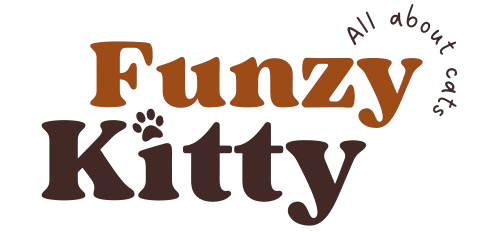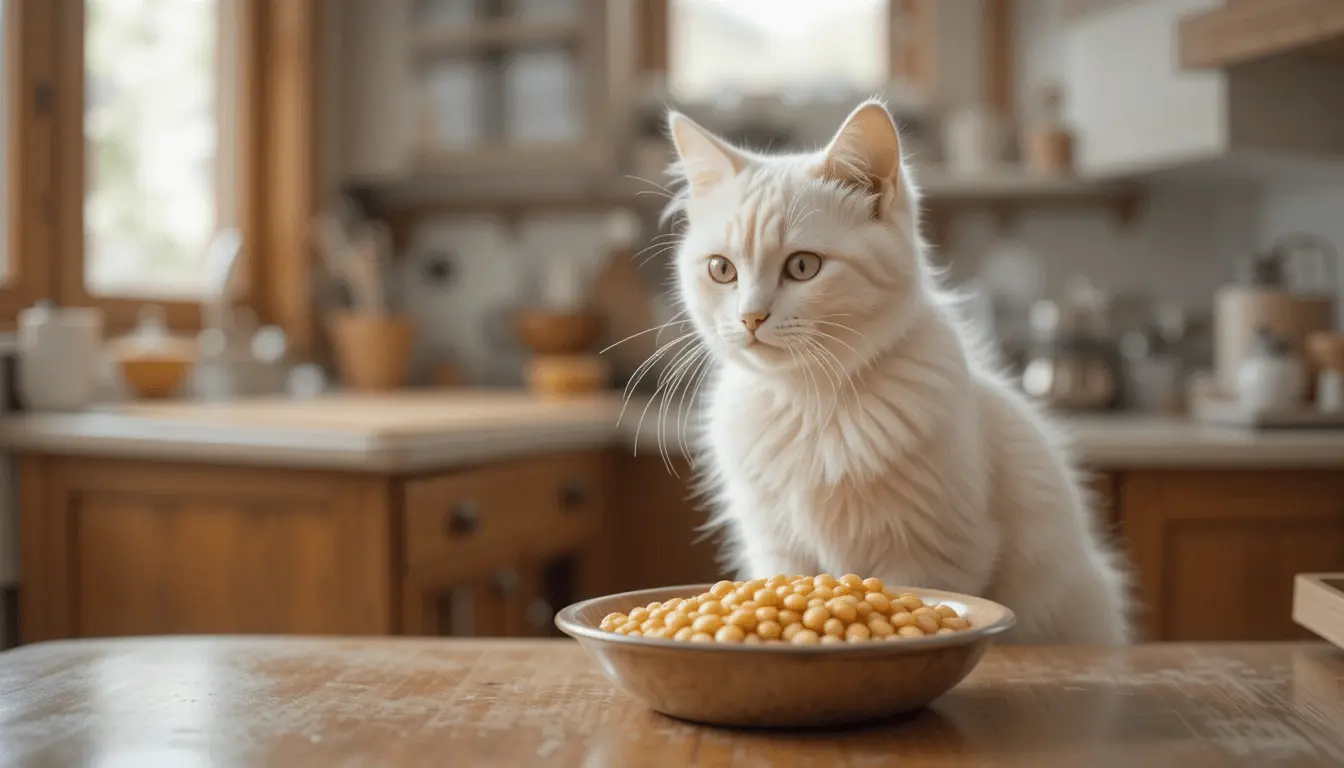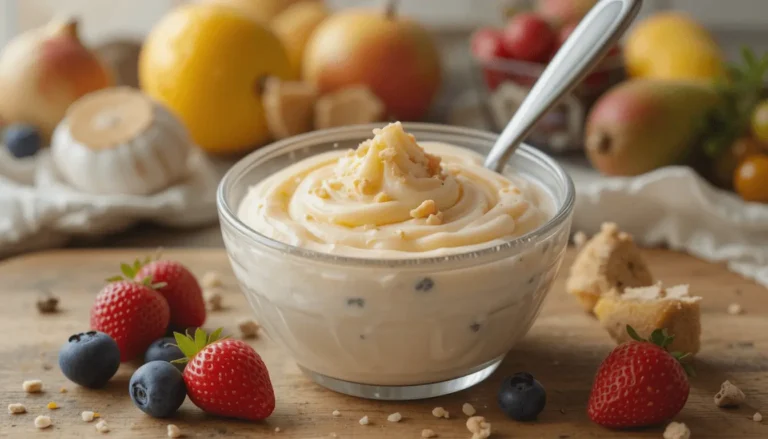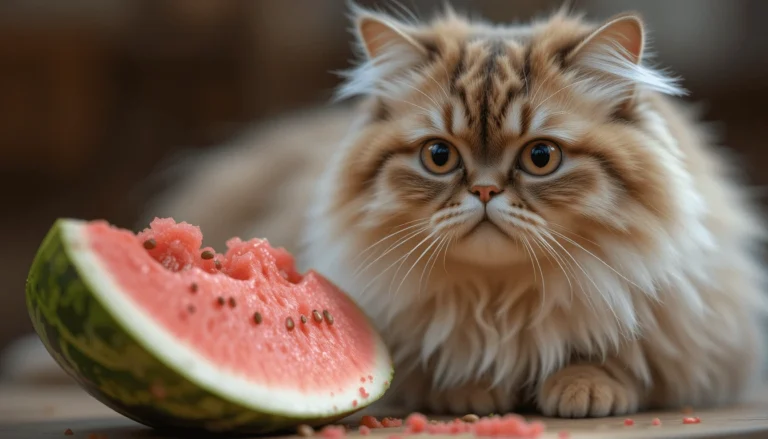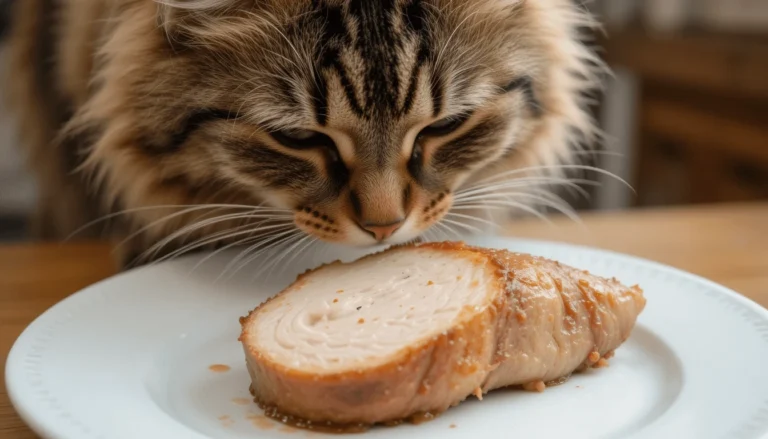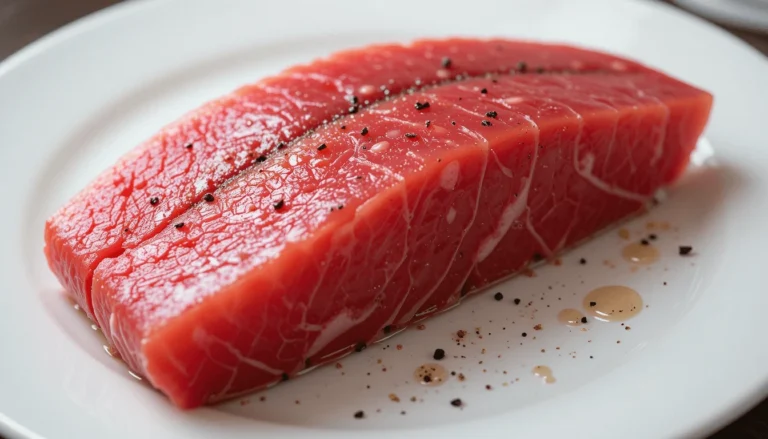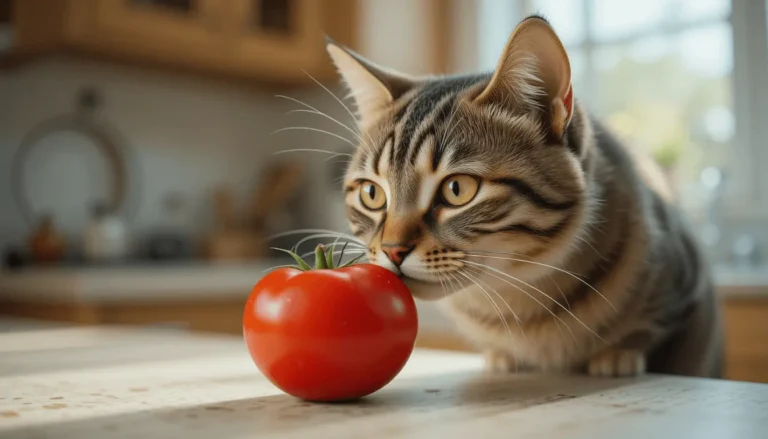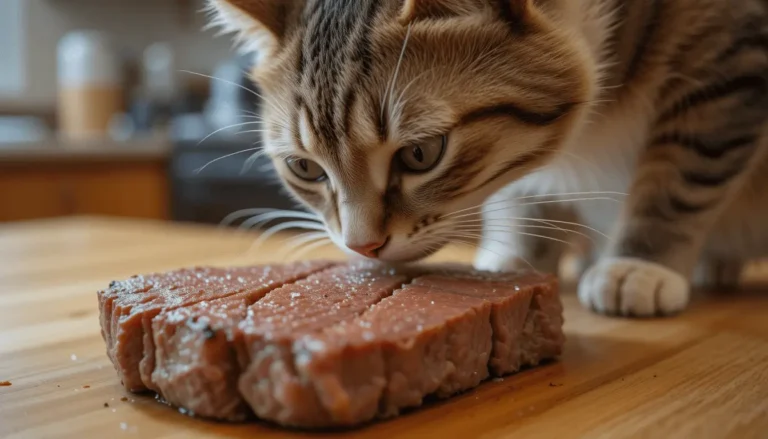Can Cats Eat Beans ? Safety, Benefits, and Risks Explained
Introduction
As cat owners, we’ve all experienced those moments when our feline friends suddenly develop an intense interest in our food. You’re enjoying a delicious bean burrito or a bowl of chili when suddenly – thump – there’s a furry face inches from your plate, eyes locked onto those tasty legumes. But before you surrender to those pleading eyes, it’s crucial to ask: Can cats eat beans safely?
The short answer is maybe, but with important caveats. While plain, cooked beans aren’t toxic to cats, they’re not an ideal food for our obligate carnivore companions. Let’s dig deeper into this beany dilemma to understand:
Which types of beans are safest (and which to avoid)
Potential benefits vs. risks
Proper serving sizes and preparation
Healthier alternative snacks
“But my cat loves beans!” you might say. We’ll explore why that might be and how to satisfy their curiosity safely.
Are Beans Safe for Cats? The Vet-Approved Breakdown
Understanding Feline Digestion: Carnivores vs. Omnivores
First, it’s essential to remember that cats are obligate carnivores. Their digestive systems are designed to process meat, not plant matter. Unlike humans (or even dogs), cats:
- Lack specific enzymes to break down plant proteins efficiently
- Have shorter digestive tracts optimized for meat
- Require nutrients (like taurine) that only come from animal sources
This doesn’t mean all plant foods are dangerous, but it does mean beans offer minimal nutritional value to cats compared to meat-based foods.
Safe Bean Varieties for Cats
According to veterinary nutritionists and the ASPCA Animal Poison Control Center, these plain, cooked beans are generally safe in tiny amounts:
Black beans (cooked, unsalted)
Pinto beans (cooked, plain)
Garbanzo beans (chickpeas) (cooked, no seasoning)
Lentils (cooked thoroughly)
Green beans (steamed, plain)
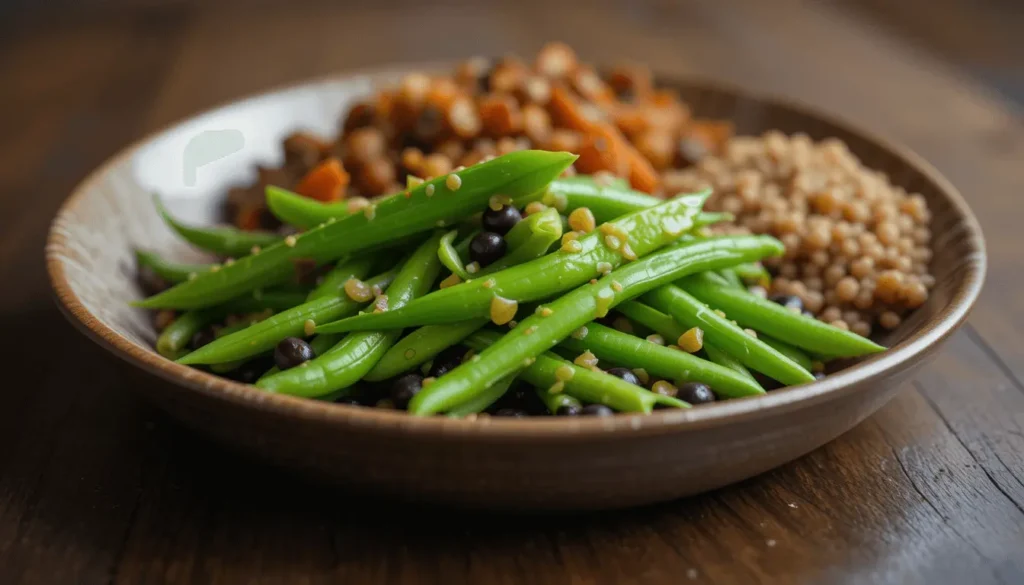
Preparation is key – beans must be:
- Fully cooked (never raw)
- Cooled to room temperature
- Free from any seasonings, oils, or additives
- Mashed or cut into tiny pieces to prevent choking
Dangerous Bean Preparations to Avoid
Canned beans (typically high in sodium)
Refried beans (often contain garlic/onion)
Baked beans (usually have sugar, tomato sauce, spices)
Raw or undercooked beans (contain lectins that cause poisoning)
Bean sprouts (risk of bacterial contamination)
Veterinary Insight: “While plain cooked beans aren’t toxic, they can cause significant gastrointestinal upset in cats due to their high fiber and complex carbohydrate content,” explains Dr. Sarah Wooten, DVM. “I’ve seen cases where just a few beans led to painful gas and diarrhea.”
Potential Benefits of Beans for Cats (The Limited Upsides)
While beans shouldn’t be a dietary staple for cats, there are a few potential benefits when fed occasionally and in moderation:
1. Fiber Content: Helpful in Tiny Amounts
Cooked beans contain:
- Soluble fiber (may help with mild constipation)
- Insoluble fiber (could aid hairball passage)
However, too much fiber can:
- Cause diarrhea or loose stools
- Lead to uncomfortable gas and bloating
- Interfere with nutrient absorption
Veterinary Tip: “For cats needing more fiber, I recommend pumpkin puree or specially formulated cat foods over beans,” says Dr. Wooten.
2. Plant-Based Protein: Not Ideal but Present
While beans contain protein:
- It’s incomplete protein (lacks essential amino acids cats need)
- Much less bioavailable than animal protein
- Can’t replace meat in a cat’s diet
Nutrition Fact: Cats require taurine, an amino acid only found in animal tissue. Plant proteins don’t provide this essential nutrient.
3. Mental Stimulation: The Novelty Factor
Some cats enjoy:
- Batting cooled beans as toys (supervise closely!)
- Sniffing new textures and smells
- Licking mashed bean paste (in tiny amounts)
This environmental enrichment can be beneficial, but there are safer alternatives we’ll discuss later.
Significant Risks and Precautions
1. Gastrointestinal Distress
Common symptoms from bean overconsumption:
- Excessive gas (flatulence)
- Abdominal discomfort
- Diarrhea or constipation
- Vomiting
Case Study: A 2021 report in the Journal of Feline Medicine documented a cat hospitalized for pancreatitis after eating a large quantity of refried beans. While rare, severe cases can occur.
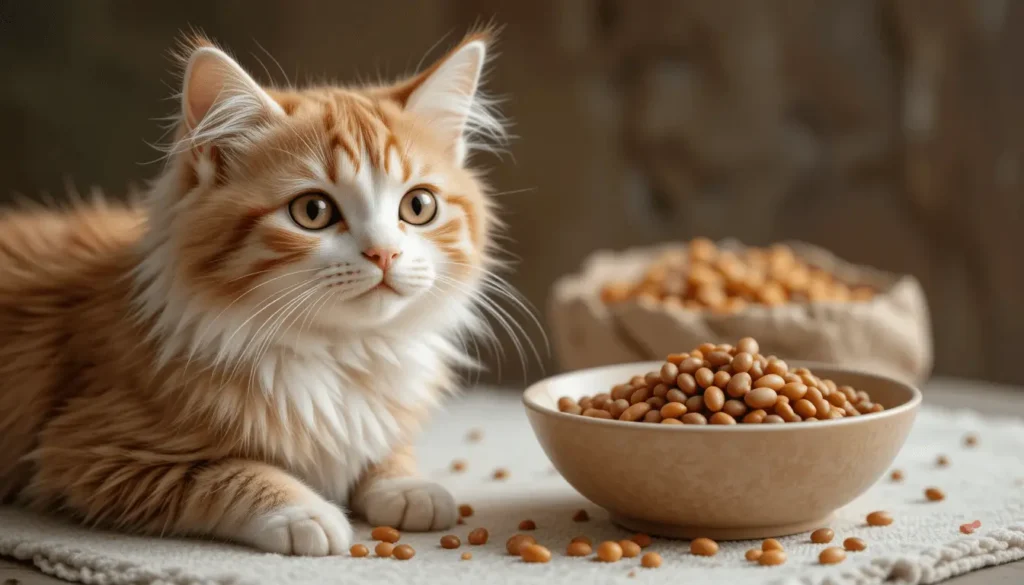
2. Sodium Poisoning Risk
Canned beans often contain 250-400mg sodium per serving – dangerous for cats whose daily requirement is just 42mg. Symptoms of salt toxicity include:
- Excessive thirst
- Lethargy
- Tremors
- Seizures (in severe cases)
3. Choking Hazard
Whole beans can:
- Get lodged in a cat’s throat
- Cause intestinal blockage if swallowed whole
- Lead to emergency vet visits
Safety Tip: Always mash or cut beans into tiny pieces if offering.
4. Long-Term Health Concerns
Regular bean consumption may contribute to:
- Obesity (beans are calorie-dense)
- Nutritional imbalances
- Chronic digestive issues
Serving Suggestions (If You Choose to Feed Beans)
If you decide to offer beans as an occasional treat:
- Select plain, cooked beans (see safe varieties above)
- Rinse thoroughly to remove excess salt/starch
- Mash or chop into pea-sized pieces
- Limit to 1-2 small pieces once a month at most
- Monitor closely for any adverse reactions
Better Idea: “There are dozens of healthier, cat-approved treats available,” notes Dr. Wooten. “Why risk stomach upset when you can offer something designed for feline nutrition?”
Healthier Alternatives to Beans
For cats interested in human food, consider these safer options:
Protein-Rich Alternatives:
- Cooked, unseasoned chicken
- Freeze-dried meat treats
- Canned tuna (in water, occasionally)
Fiber Alternatives:
- Plain pumpkin puree (1/2 tsp)
- Specially formulated cat grass
- Veterinary-prescribed fiber supplements
Interactive Treats:
- Food puzzle toys with kibble
- Frozen meat broth cubes
- Dental treats that clean teeth
Conclusion: The Final Verdict on Cats and Beans
While the occasional plain, cooked bean piece likely won’t harm your cat, beans offer minimal benefits and pose several risks. As obligate carnivores, cats thrive on meat-based diets and have little nutritional use for legumes.
If your feline friend shows interest in your bean dishes, consider it more about curiosity than craving. Redirect their attention to species-appropriate treats that will truly benefit their health.
Final Thought: Has your cat ever surprised you by stealing “people food”? What unusual foods has your feline tried to claim as their own? Share your stories in the comments below!
FAQ: Your Top Bean Questions Answered
Can cats eat green beans?
Yes! Plain, cooked green beans are one of the safest vegetable options for cats in moderation.
Are bean sprouts okay for cats?
No. Raw sprouts risk bacterial contamination and offer no nutritional benefit.
My cat ate baked beans – what now?
Monitor closely for vomiting/diarrhea. Call your vet if symptoms appear or if the beans contained garlic/onion.
Do beans help with cat constipation?
Pumpkin or vet-recommended remedies work better without the risks.
Can kittens eat beans?
Absolutely not. Kittens have even more sensitive digestive systems.
